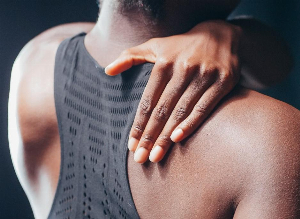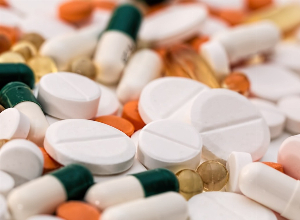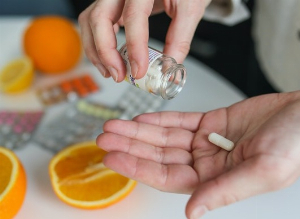When sore muscles mean trouble: Signs that your muscle pain could be something more serious
Published 19 May 2021 • By Courtney Johnson
We all are familiar with that feeling of muscle soreness - be it after a long day of chores or an intense session at the gym. While muscle pain is often a sign of growing or over-worked muscles, it can also be a symptom of other, more serious medical conditions.
What is muscle soreness? Why does it happen? When is it a sign of something more concerning?
Read on to discover the answer to these questions and more!

What is muscle soreness? Why does it happen?
We’ve all been there - you eagerly throw yourself into a new exercise program or into that project you’ve been meaning to finish until the next morning, when you’re so sore you can barely get yourself up out of bed.
Muscle soreness, or myalgia, as it’s called by the medical community, is a common side effect of muscle overuse which often happens after exercise or repetitive activity.
When it occurs after exercise, it may be called delayed onset muscle soreness (DOMS) and can affect people of all ages, from novice to elite athletes to even your average Joe.
When we exercise, the body’s muscles extend and contract to support movement. When stress is put on the muscles, micro-tears in the muscle fibres are created, which later cause pain and inflammation as the body works on repairing them. It is this process of tear and repair that helps our muscles grow stronger over time.
While exercise or activity-induced muscle soreness typically eases within 24-72 hours, when it is chronic it can also be a sign of a number of other, more severe medical conditions.
What other health conditions can be indicated by muscle pain?
Muscle pain can be a sign of a number of the following conditions:
Fibromyalgia
With this condition, muscle pain is in the name: from Latin, “fibro,” meaning fibrous tissues; “my,” meaning muscles; and “algia,” meaning pain.
Fibromyalgia is a condition that causes muscle ache and stiffness and sensitivity to pain. The pain is usually experienced all over the body and is often accompanied by fatigue and brain fog.
Lupus
Lupus is an autoimmune disease which causes pain and inflammation throughout the body. It can cause many different symptoms, but it most commonly affects the skin, joints, and internal organs like the kidneys and heart.
Over 90% of lupus patients experience muscle and joint pain at some point in their journey with the disease, and around 50% experience muscle pain as one of their initial symptoms.
Multiple sclerosis
Multiple sclerosis is a disease in which the immune system eats away at the protective coating of nerves, causing vision loss, pain, fatigue and impaired coordination. It can also cause muscle spasticity, a state of tightness or stiffness of the muscles that occurs in spasms or randomly-occurring muscle contractions. These spasms can affect any part of the body, but are most common in the legs.
COVID-19 or Long COVID
After fever, cough, and sore throat, muscle pain and weakness is one of the most common COVID-19 symptoms. Some patients who have Long COVID experience long after initial infection and often experience it in waves.
>> Read more about how Long COVID is impacting Carenity members’ lives here <<
Arthritis
There are many forms of arthritis (rheumatoid arthritis, osteoarthritis, psoriatic arthritis, gout, infectious arthritis...), many of which cause swelling, stiffness and reduced range of motion, as well as redness in the joints.
When the movement in your joints is limited, the muscles around them often will become stiff and sore as well. The chance of developing arthritis increases with age, and the likelihood of having a particular form may rely on your family health history.
Lyme disease
Lyme disease is a tick-borne illness caused by the bacterium Borrelia burgdorferi. Within the first 3 to 30 days after a bite from a tick infected with Lyme disease, you may develop muscle and joint pain, as well as a rash (often in a bull’s-eye pattern) and flu-like symptoms (fever, headache, swollen lymph nodes, chills).
Make sure to see your doctor if you experience these symptoms - if left untreated, Lyme disease can stiffen the joints and spread to the heart and nervous system.
Rhabdomyolysis
Rhabdomyolysis, often called “rhabdo” is a rare but serious, potentially life-threatening condition in which skeletal muscle tissue rapidly breaks down, releasing their fibre content into the bloodstream. This substance (notably the protein myoglobin) is then filtered out of the body by the kidneys. Myoglobin can damage the kidney cells and eventually lead to kidney failure.
Rhabdomyolysis is triggered by muscle injury, which can be physical (intense exercise, heat stroke, a car accident, etc.), chemical (certain statin medications, overexposure to alcohol or certain other stimulants, etc.), or genetic (McArdle’s disease, carnitine deficiency, Duchenne muscular dystrophy, etc.) in origin. Firefighters, people in the military, endurance athletes, or older adults who cannot get up from a fall for an extended period are the highest at risk.
Anaemia
While anaemia (lack of oxygen-carrying red blood cells) doesn’t usually cause muscle pain, the lack of oxygen in the blood and tissues can in fact make you feel tired and weak. It’s often an indicator that you need more iron in your bloodstream.
Anaemia can also cause shortness of breath, dizziness, chills, pale skin, and irregular heartbeat.
Reaction to medication
Certain cholesterol-lowering medications (such as statins) can cause muscle pain and damage. This muscle pain and fatigue affects around 10-20% of patients who take them.
As mentioned early, in rare cases statins can trigger rhabdomyolysis, the death and breaking down of muscle tissue.
Flu
When faced with an allergen or an infection like the flu, we tend to experience muscle ache as the immune system responds. Though we often feel sore when we have a cold, allergies, or sinus troubles, the muscle pain felt during the flu is often more severe.
Vitamin D deficiency
Vitamin D is crucial to proper body function, as it helps form and maintain strong bones, improves muscle function, and fights cognitive decline, among other things. We normally get our supply of vitamin D from sun exposure and our diets. When we don’t get enough vitamin D, it can cause muscle cramps and joint pain.
It is important to note that this list is not comprehensive and that other conditions may exist that have muscle soreness as a symptom. Muscle pain may not always need medical treatment but if you are ever concerned, make sure to consult with your doctor.
Was this article helpful to you?
Share your thoughts and questions with the community in the comments below!
Take care!
Sources:
- Understanding Muscle Soreness - How Much is Too Much?, National Kidney Foundation
- What to know about muscle soreness, MedicalNewsToday
- What is Fibromyalgia, News-Medical Life Sciences
- Lyme disease, CDC
- Rhabdomyolysis, MedlinePlus, NIH U.S. National Library of Medicine
- Signs Your Muscle Pain Is Something Else, WebMD
4 comments


 Facebook
Facebook Twitter
Twitter





